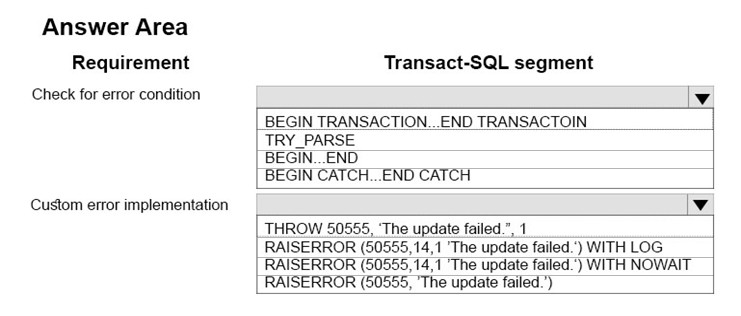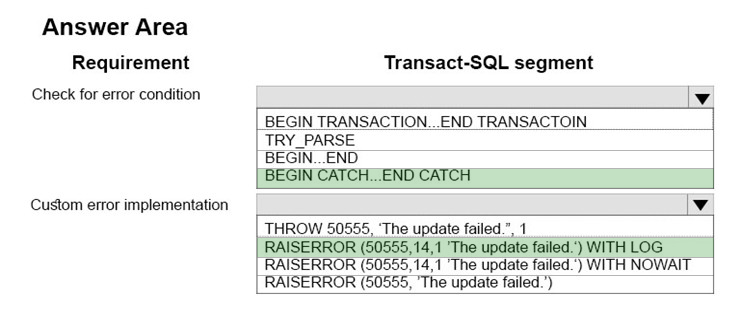

HOTSPOT -
You need to develop a Transact-SQL statement that meets the following requirements:
✑ The statement must return a custom error when there are problems updating a table.
✑ The error number must be the value 50555.
✑ The error severity level must be 14.
✑ A Microsoft SQL Server alert must be triggered when the error condition occurs.
Which Transact-SQL segment should you use for each requirement? To answer, select the appropriate Transact-SQL segments in the answer area.
Hot Area:

Angelcr
4 years, 5 months agoVermonster
4 years, 5 months agoHA2020
4 years, 7 months agomattia_88
5 years, 8 months agoBartek
5 years, 8 months ago